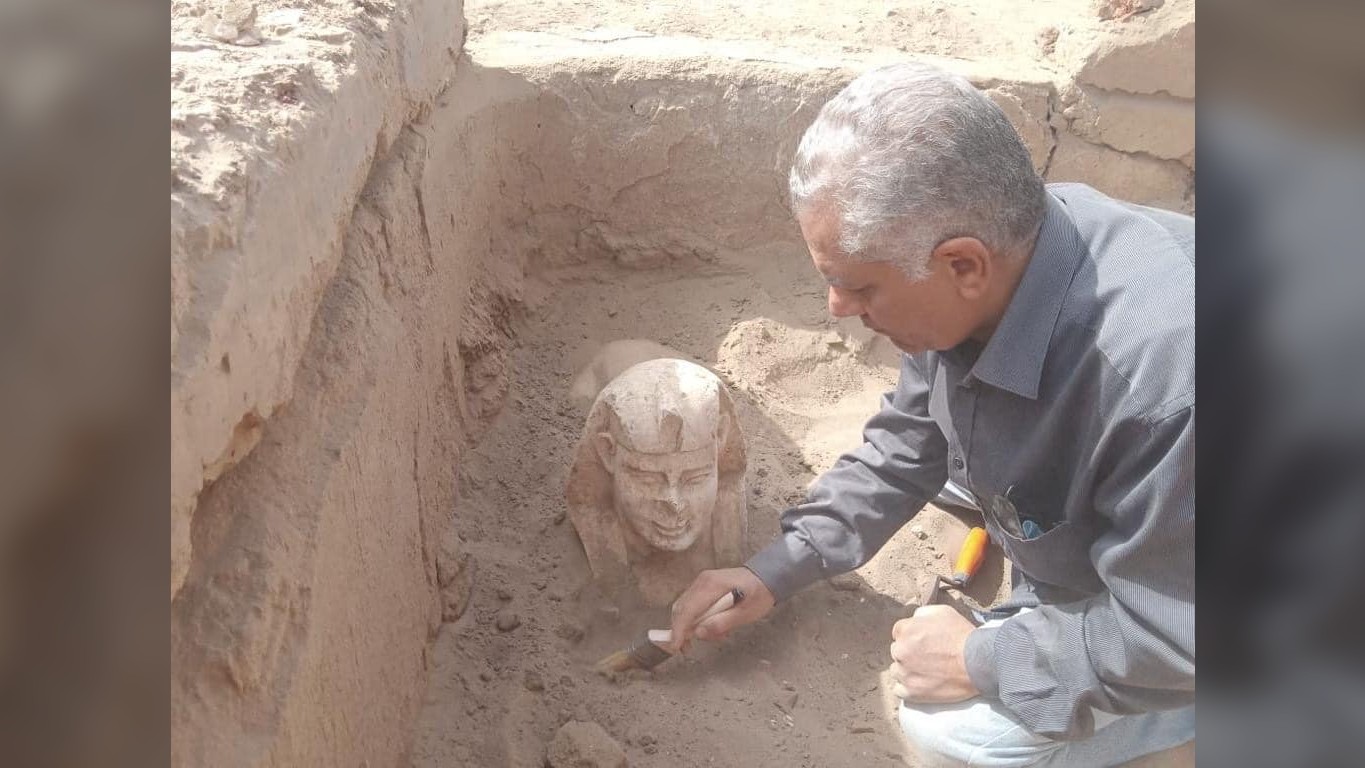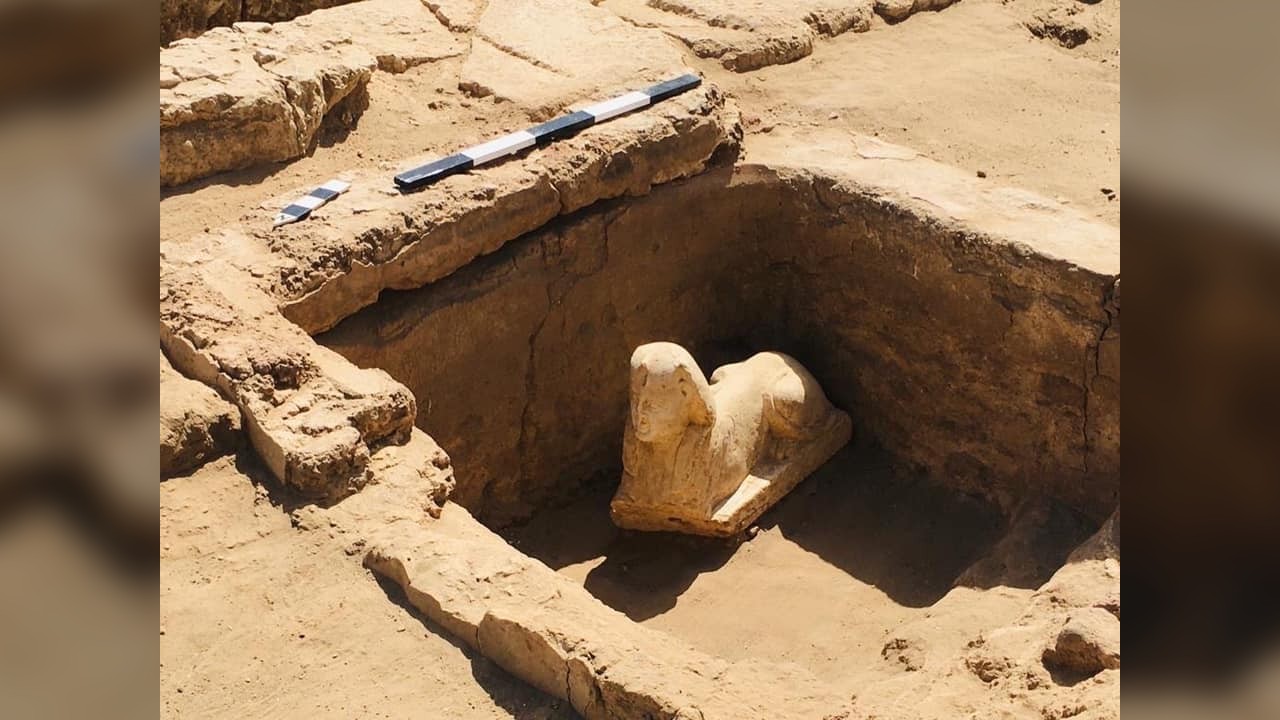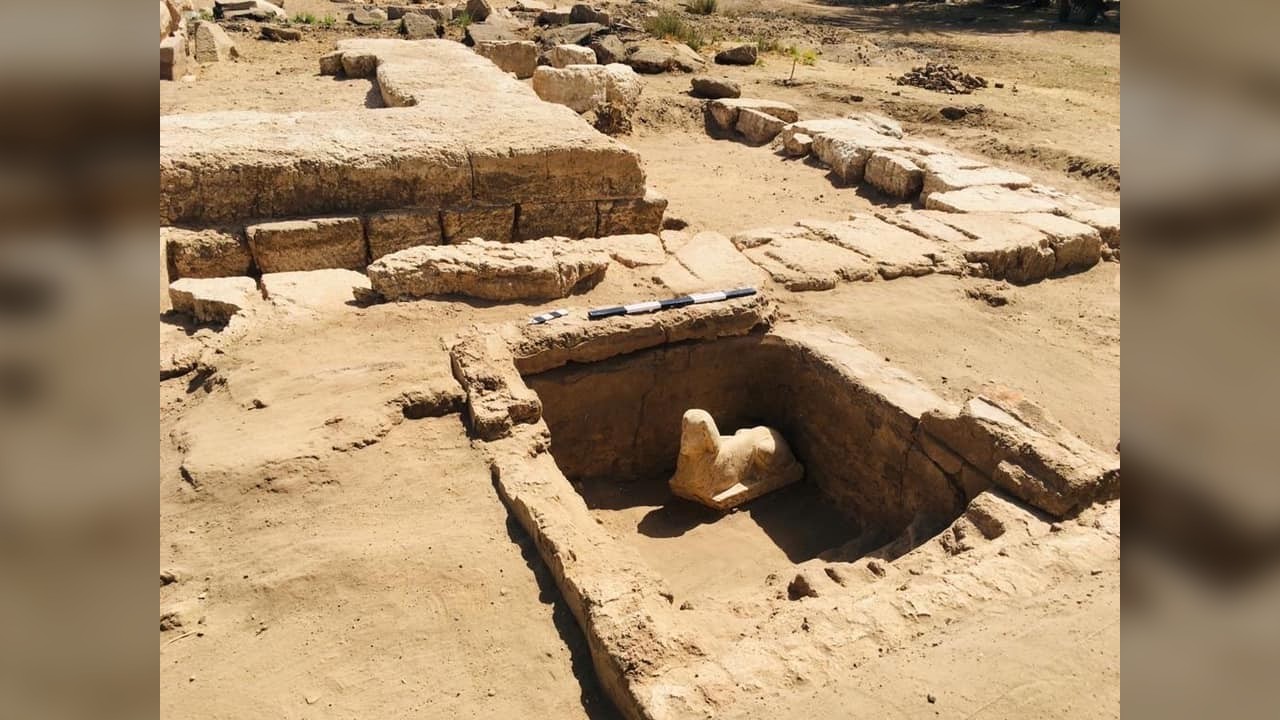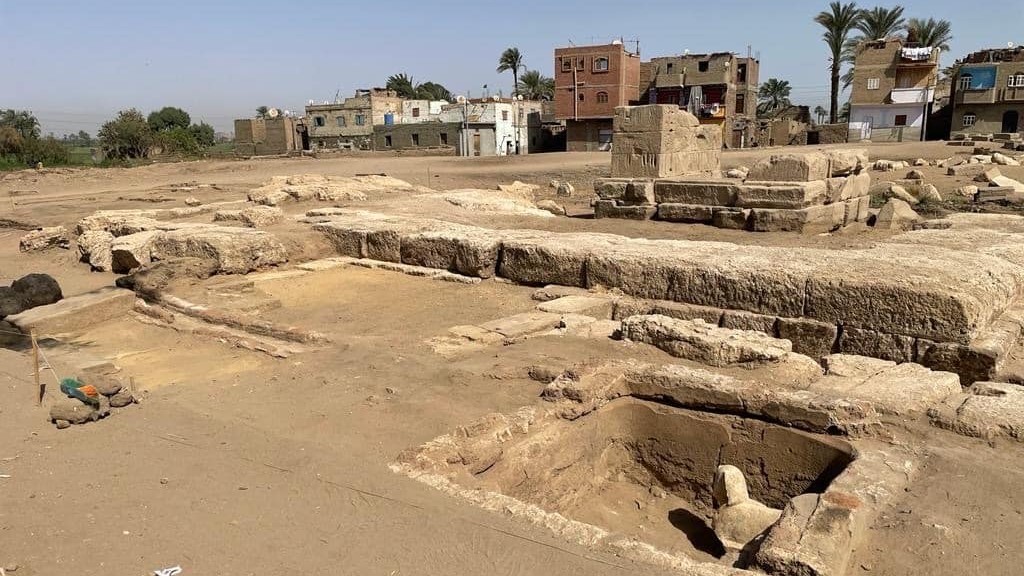Newfound ancient Egyptian sphinx statue may depict Roman emperor Claudius, but not everyone agrees
A sphinx found at an ancient Egyptian temple may depict the face of the Roman emperor Claudius, but not everyone agrees with this interpretation.

Archaeologists excavating an ancient temple in Egypt have unearthed a statue of a sphinx whose face may depict the Roman emperor Claudius, the Egyptian Ministry of Tourism and Antiquities said in a statement Monday (March 6).
However, scholars not affiliated with the research told Live Science that they cannot be certain the face is that of Claudius.
During his reign (A.D. 41-54), the Roman Empire controlled ancient Egypt; however, like most emperors, Claudius never visited Egypt. He is most famous for his invasion of Britain, which resulted in the Roman Empire conquering a sizable part of the island. Claudius is also well known for being poisoned to death, possibly by his wife, Agrippina.
Related: The 5 craziest ways emperors gained the throne in ancient Rome
The face of Claudius?



The sphinx's face has a dimpled smile, and yellow and red can still be seen on the face, Mamdouh Eldamaty, an archaeology professor at Ain Shams University in Egypt and a former minister of antiquities, said in the statement. Eldamaty's team compared the face with surviving depictions of Roman emperors and found Claudius to be a close match.
Archaeologists discovered the statue in a basin at the Temple of Horus (a falcon-headed god associated with the sky) near Dendera, Egypt, a town about 33 miles (54 kilometers) north of Luxor. The basin was found on a limestone platform and dates to around 500 years after Claudius' reign, the statement said. It's not clear why the statue had been placed there.
Near the statue, archaeologists also found a tablet with hieroglyphic and demotic (a script derived from hieroglyphs) writing on it. The tablet is being analyzed, and what it says is not yet clear.
Get the world’s most fascinating discoveries delivered straight to your inbox.
Live Science contacted scholars not affiliated with the research to get their thoughts on the discovery. All of them said that, based on the released images, they cannot be certain that the sphinx shows the face of Claudius. "The photos are a little small for me to confirm if it is Claudius or not, but I can see a Claudian aspect to the image," Eric Varner, an associate professor of art history at Emory University in Atlanta who specializes in Roman portrait sculpture and imperial iconography, told Live Science in an email.
Other scholars gave similar assessments. "From the photos I find it impossible to make any statement about whether the features resemble Claudius," Olivier Hekster, a history professor at Radboud University in the Netherlands who specializes in the representation of Roman emperors, told Live Science in an email. Steven Tuck, a professor of history and classics at Miami University in Ohio, also told Live Science that he doesn't know if the face is Claudius'.
If the sphinx does indeed feature Claudius, this wouldn't be the only time the emperor was treated like Egyptian royalty. In 2014, archaeologists revealed the discovery of a carving depicting Claudius as a pharaoh at the Temple of Isis at Shenhur, about 12 miles (20 km) north of Luxor.
Other sphinxes also show images with the faces of Roman emperors. "Finding a statue of a sphinx with imperial features is in itself not surprising," Hekster said. "We already know of a small sandstone bust depicting the emperor Vespasian resembling a sphinx."
Excavations at Dendera and analysis of the artifacts are ongoing, the ministry said in the statement.

Owen Jarus is a regular contributor to Live Science who writes about archaeology and humans' past. He has also written for The Independent (UK), The Canadian Press (CP) and The Associated Press (AP), among others. Owen has a bachelor of arts degree from the University of Toronto and a journalism degree from Ryerson University.




